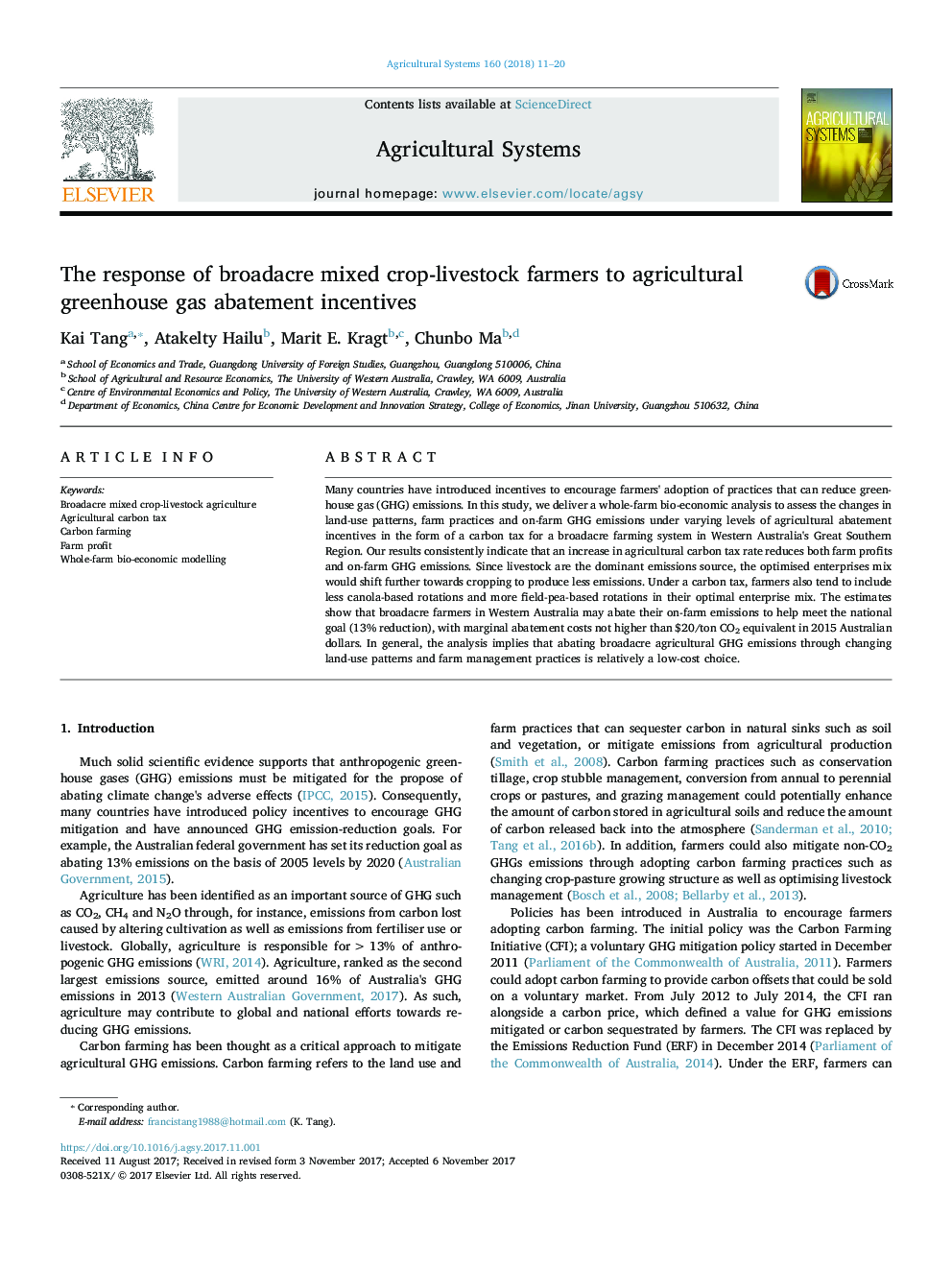| Article ID | Journal | Published Year | Pages | File Type |
|---|---|---|---|---|
| 8875068 | Agricultural Systems | 2018 | 10 Pages |
Abstract
Many countries have introduced incentives to encourage farmers' adoption of practices that can reduce greenhouse gas (GHG) emissions. In this study, we deliver a whole-farm bio-economic analysis to assess the changes in land-use patterns, farm practices and on-farm GHG emissions under varying levels of agricultural abatement incentives in the form of a carbon tax for a broadacre farming system in Western Australia's Great Southern Region. Our results consistently indicate that an increase in agricultural carbon tax rate reduces both farm profits and on-farm GHG emissions. Since livestock are the dominant emissions source, the optimised enterprises mix would shift further towards cropping to produce less emissions. Under a carbon tax, farmers also tend to include less canola-based rotations and more field-pea-based rotations in their optimal enterprise mix. The estimates show that broadacre farmers in Western Australia may abate their on-farm emissions to help meet the national goal (13% reduction), with marginal abatement costs not higher than $20/ton CO2 equivalent in 2015 Australian dollars. In general, the analysis implies that abating broadacre agricultural GHG emissions through changing land-use patterns and farm management practices is relatively a low-cost choice.
Keywords
Related Topics
Life Sciences
Agricultural and Biological Sciences
Agricultural and Biological Sciences (General)
Authors
Kai Tang, Atakelty Hailu, Marit E. Kragt, Chunbo Ma,
